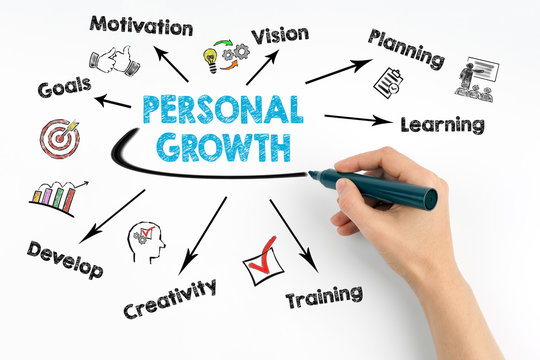Personal Growth and Self Building Series | You Wanna Know
Personal Growth and Self Building Series | You Wanna Know

Personal Growth and Self Building Series | You Wanna Know
At You Wanna Know, we believe that personal growth isn’t just a concept—it’s a journey every individual deserves to embark on. That’s why we created the Personal Growth and Self-Building Series, an original collection of thought-provoking articles designed to help you unlock your potential, reshape your mindset, and build a life rooted in purpose and confidence.
In today’s fast-paced world, it’s easy to feel lost, pressured, or unsure of yourself. This series is here to remind you that growth begins with small, intentional steps. From exploring the power of habits that shape our daily lives to understanding the importance of self-character building and respect in relationships, every article is crafted to connect with your everyday struggles and inspire positive change.
What makes this series special is its focus on being relatable and actionable. You won’t just read ideas—you’ll find practical tips, real-life examples, and simple strategies you can apply immediately. Whether you want to stand out from the crowd, build unique thoughts, or discover what books to read during moments of solitude, our series guides you in shaping not only who you are but also who you can become.
Personal growth is not about perfection—it’s about progress. Through this series, we aim to walk beside you on this journey, offering wisdom, encouragement, and tools that help you navigate challenges with strength and clarity. Welcome to a space where self-improvement isn’t a chore but an empowering path forward.
🌟 Personal Growth and Self Building Series by You Wanna Know
1. Self-Character Building: Shaping the Person You Want to Be
Character is the true measure of a person, far more valuable than talent or temporary success. Building strong character means living with honesty, integrity, kindness, and consistency. These qualities shape how people trust and respect you. While talent may help you shine for a moment, character ensures you are remembered for a lifetime. To build character, focus on your daily actions—keep your promises, admit mistakes, and always treat others with fairness. A strong character also makes you resilient during challenges, as your values keep you grounded. In a world where shortcuts and show-offs are common, genuine character becomes your strongest weapon. By shaping who you are inside, you automatically shape how the world perceives you outside.
2. Respect Girls: The Foundation of True Gentleman Behavior
Respecting girls goes beyond courtesy—it’s about recognizing equality and humanity. A true gentleman doesn’t see respect as optional but as natural behavior. Respect means valuing a girl’s voice, choices, and boundaries without attaching stereotypes or judgments. Many mistake respect as weakness, but in reality, it is strength. It reflects maturity and self-control. Disrespecting women has always been a mark of insecurity, while respecting them reflects inner confidence. Respecting girls also sets a foundation for healthier families, workplaces, and friendships, because when women are valued, society flourishes. Whether it’s offering support, listening sincerely, or standing against bias, respect should never be selective. A real man earns honor by showing respect to women—not just in words but in consistent actions.
3. Respect Boys: Understanding Equality in Character and Dignity
Just as girls deserve respect, boys equally need kindness, empathy, and value. Often, society emphasizes respecting women while overlooking that boys, too, face struggles, emotions, and insecurities. Respecting boys doesn’t mean excusing wrong behavior—it means understanding them as humans who also deserve dignity. Many young men hide their pain because society expects them to “stay strong.” When we respect boys, we allow them to express themselves, grow, and build confidence without fear of being judged. True equality is not one-sided; it’s balanced. Respecting boys encourages them to respect others too, creating a cycle of empathy and fairness. When boys are respected for their individuality and supported in their growth, they grow into men who value others equally.
4. Becoming the Best Among the Crowd: Standing Out Without Showing Off Self Building
In today’s competitive world, everyone wants to stand out, but not all do it with grace. Becoming the best among the crowd isn’t about being loud or showy; it’s about letting your actions and values speak. People remember those who uplift others, maintain humility, and consistently strive for excellence. To stand out, build skills, practice discipline, and nurture good habits that make you reliable. True greatness lies in being different without needing to prove it loudly. Think of the calm leader, the kind helper, or the disciplined learner—Instead of chasing validation, focus on becoming irreplaceable through your work ethic, character, and humility.
5. Make Your Thoughts Unique: The Art of Original Thinking
Original thinkers are the ones who drive change in the world. Instead of copying others blindly, they question, explore, and create new paths. To make your thoughts unique, train your mind to look deeper into situations. Read widely, think critically, and never fear asking “why.” Avoid the comfort of the copy-paste mindset—because repeating what others do will never make you stand out. Unique thoughts emerge from curiosity, creativity, and courage. For example, instead of following trends, try imagining the next big idea. This approach not only sharpens your brain but also earns respect as a thinker rather than a follower. Originality doesn’t mean being different just for attention—it means adding real value with fresh ideas. When you think differently, you live differently, and people naturally recognize your uniqueness.
6. Self-Improvement Tips: Small Daily Changes That Transform You Self Building
Self-improvement is not about overnight transformation—it’s about small, consistent steps that build big results. Start by setting simple habits: wake up early, stay organized, eat healthy, and dedicate time for learning. Replace negative self-talk with affirmations that build confidence. Improvement also comes from discipline—like limiting distractions, practicing gratitude, and exercising regularly. Even dedicating 20 minutes a day to reading or reflection can reshape your mindset over time. The key is to focus on progress, not perfection. Every small improvement compounds into long-term success. When you embrace a growth mindset, you stop comparing yourself to others and start competing with your past self. Real self-improvement is not about becoming someone else—it’s about becoming the best version of you.
7. What Books to Read When Alone: Companions for Self-Building
Books are some of the best companions when you’re alone—they teach, inspire, and strengthen your mind. For personal growth, motivational books like Atomic Habits by James Clear help you understand the power of small actions. Spiritual books like The Bhagavad Gita or Meditations by Marcus Aurelius guide you in self-discipline and inner peace. Biographies of great leaders show real examples of resilience, courage, and determination. Self-help classics like The 7 Habits of Highly Effective People push you to adopt habits of success. Reading books when alone keeps your mind productive instead of wandering into negativity. They provide wisdom, clarity, and strength, reminding you that solitude can be the best time for self-building. A book can be your mentor when no one else is around.
8. The Power of Habits: How Small Actions Create Big Change Self Building
Your habits define your future. Every action you repeat daily becomes a building block of your character and success. Good habits—like exercising, reading, journaling, or practicing gratitude—slowly transform your life. Bad habits, on the other hand, silently pull you down. The real power of habits lies in their consistency. A 1% positive change every day may feel small, but over time, it creates extraordinary results. Successful people are not born different—they simply adopt better habits and stay committed to them. Start by identifying one negative habit you want to break and replace it with a positive one. With patience, discipline, and repetition, habits shape not just your routine but your destiny. Change your habits, and you change your life.
READ MORE ABOUT OUR OTHER TOPICS
